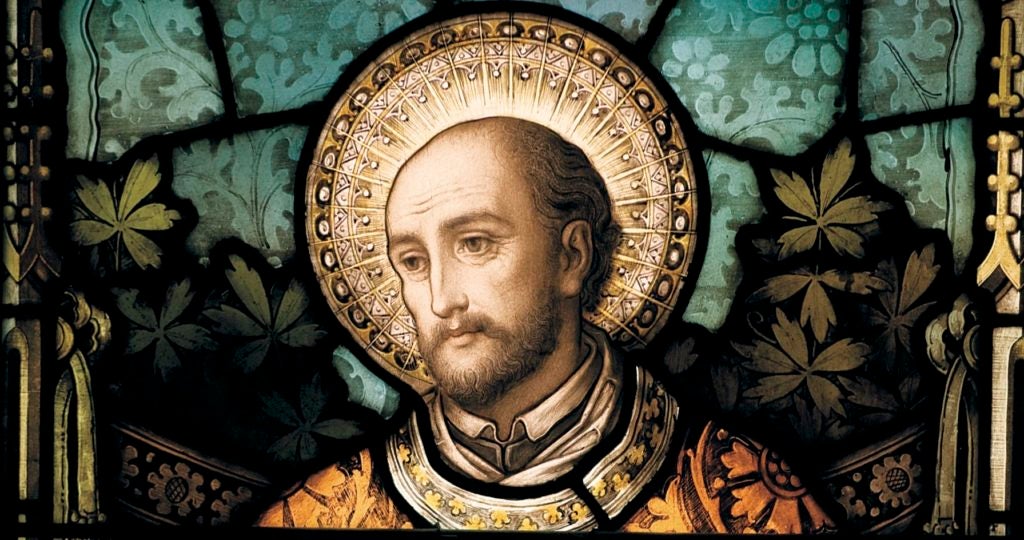St. Ignatius of Loyola

Who was Ignatius of Loyola?
Ignatius (Iñigo) of Loyola was a 16th Century Basque minor nobleman who became a bridge figure between the Romanticism of the late middle ages and the excitement and creative unrest of the Renaissance. He was a man of deep and often unruly passions and strong—but superficial—piety. In 1521, in a foolhardy defense of the castle in Pamplona, Spain against the French, Ignatius was badly injured by a cannonball to his leg. Due to his injury, Ignatius was brought to his family’s castle in Loyola, where he underwent two painful surgeries and a lengthy period of convalescence.
During his recuperation, Ignatius began a process of religious transformation that completely reoriented his life. This process of transformation brought him to the town of Manresa, where a year of intense and often difficult religious growth gave him the insights that later became the core of his famous Spiritual Exercises. Subsequently, he went off to the Holy Land intending to live and die where Jesus lived and died. However, because of the tense political situation in Jerusalem at that time—and because of Ignatius’s own extreme form of piety—the Franciscans who had Christian jurisdiction of Jerusalem expelled Ignatius from the Holy Land, forcing him to return to Spain.
Upon returning to Spain, Ignatius realized that what he really wanted to do in life was serve God’s people. To do this competently and effectively, he very quickly saw that what he needed was an education. He spent two years studying Latin, the language of scholars, and after a few difficult starts at various Spanish universities, finally received graduate and postgraduate degrees from the University of Paris. Ignatius’s authentic spirituality and winning personality garnered the attention and admiration of a group of fellow students at the University of Paris. They shared his religious ideals and his educational experiences, and in time became the co-founders of the Society of Jesus, a new religious order that grew rapidly under Ignatius’s leadership.
The Society of Jesus—or Jesuits, as they came to be known—followed in Ignatius’s footsteps in the fusing together of spirituality and pedagogy. Ignatian spirituality—as it came to be known—was, and is today, characterized by several key principles attributable to the insights of Ignatius: interior freedom; discernment; finding God in all things; magis (the ‘more’ or ‘better’); cura personalis (care of the whole person). These characteristics of Ignatian spirituality underlie Ignatian pedagogy—the educational process through which Ignatius believed he—and his fellow Jesuits—could bring about the betterment of the Church and the betterment of humanity.
